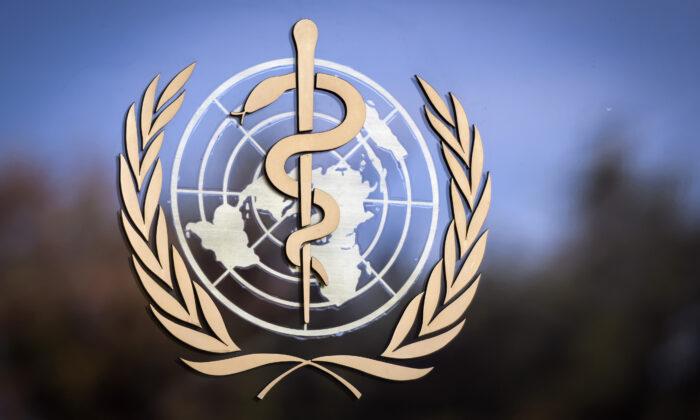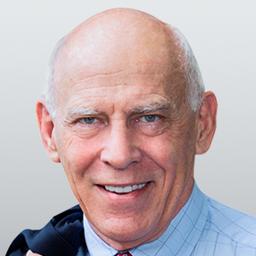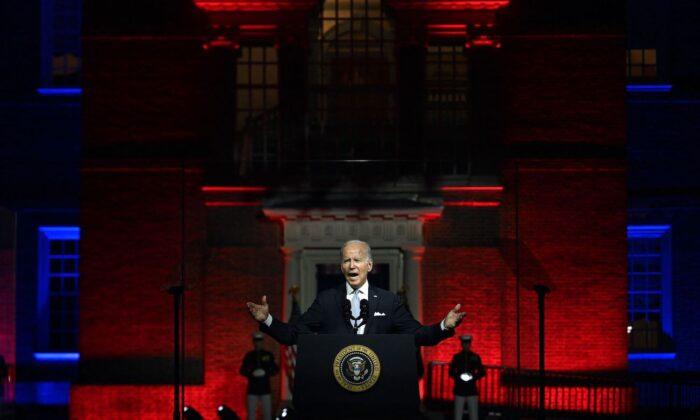Commentary
Leaders rely on experts both to help them decide policy and to support them in the decisions they make. They know that in a pandemic like the present, people want politicians to set aside their political agendas and defer to experts instead. That’s why political leaders flank themselves with institutional experts in epidemiology when explaining their decisions.
But the “science” is unreliable and the modeling of the epidemiologists keeps changing. The bureaucracies of public health experts, such as the alphabet soup of the WHO, CDC, FDA, PHE (in England), have their own agendas, political and organizational.
They may, such as the Centers for Disease Control and Prevention (CDC), have been founded with a specific mission of combating communicable diseases as a matter of national security. But when time passes with no such emergency, organizational activity
expands to other issues, a well-known bureaucratic phenomenon called “mission creep.” In the CDC’s case, that meant expanding its work to address school bullying, workplace accidents, and gun control. It was woefully ill-prepared for an actual communicable disease pandemic like COVID-19.
The main objective of the World Health Organization (WHO), a specialist agency of the United Nations, is to ensure “the attainment by all peoples of the highest possible level of health.” Its own mission creep, calling “unsafe” abortion a preventable pandemic as if it were a communicable disease, involved promoting a right to abortion worldwide.
The WHO is a highly political bureaucracy, one that excludes Taiwan. On the other hand, it praises the Chinese regime for its transparency even as the regime suppresses the truth about the virus, crushing dissent from scientists and journalists. When China claimed that the risk of human-to-human transmission was minimal, the WHO acted as the CCP’s mouthpiece, emphasizing the low risk, denying the need for international travel restrictions, and opposing as unnecessary President Donald Trump’s restrictions on travel with China at the end of January.
This proved a trap for President Trump’s domestic political opponents, who are highly partisan but see themselves as the ones following the science. Trump’s decision to close the border to those coming from China (and later Europe and some Asian countries), which presidential candidate Joe Biden denounced at the time as xenophobic and racist, came to be adopted across the world. Democrats then made a 180-degree turn, supporting the decision, but
complaining, as House Speaker Nancy Pelosi recently did, that it was not far-reaching enough.
Politicians and Science
But let’s assume that political leaders are neither partisan nor opportunistic. They simply want the best for the people they govern and want to know what is best. So they consult experts with institutional and scientific expertise in the area of concern. In a public health crisis they consult epidemiologists.
Even sticking to epidemiologists, which one is a government supposed to trust? The clearest case of a government’s deferring to the scientists is Sweden, a very liberal and secular country. The political leaders there, with popular support, handed the government’s response to experts, putting their chief epidemiologist, Anders Tegnell, in charge. He led the nation in a policy designed to shield the vulnerable while advising but not requiring the rest to exercise sensible distancing measures.
The policy is based on trust and information (both in better supply there than in most countries). It does not rely on lockdowns, quarantines, or even border controls. (Tegnell offers a brief explanation and rationale for the approach in an April 21
interview with science journal Nature.)
This clear case of listening to the experts and following the science is not what those who advocate doing so want to hear. The media select and present the science that supports the most negative and alarmist conclusions. Thus, the Imperial College London modeling, released March 16,
projected large numbers of deaths from COVID-19 if nothing was done to mitigate it (2.2 million in the United States, 510,000 in the UK). Its alarmist predictions received wide publicity and persuaded the British and U.S. governments to move to a more stringent approach to managing the crisis.
Political leaders are damned if they do end economic and social restrictions and damned if they don’t. Either way, they will be blamed for killing those who die, either from disease or from the terrible effects of the economic downturn. (The U.N.
warns that economic hardship resulting from the global economic downturn could result in hundreds of thousands of additional child deaths in 2020.) Epidemiologists, on the other hand, take credit whether their original predictions prove accurate or not.
The most dire of the Imperial College report’s four scenarios led political leaders in many countries to adopt measures of national stay-at-home lockdown—measures unprecedented in history and, its critics argued, unsupported by science.
Stanford’s John Ioannidis
warned, also in mid-March, about the inaccurate data and false assumptions on which recommendations for extreme and long-lasting lockdowns were based. “If we decide to jump off the cliff, we need some data to inform us about the rationale of such an action and the chances of landing somewhere safe,” he wrote on health and medicine news website STAT. His warning received much less coverage.
Good news does not sell papers or gain clicks. Indeed, media, including social media, continuously pumped out a message of fear and demonized those, epidemiologists as well as economists, who dissented.
As T.J. Rodgers
writes in the Wall Street Journal, Sweden has fewer deaths per million than the seven hardest-hit U.S. states, which account for over 60 percent of cases in the United States. All but one of the seven (Louisiana) were quick to institute lockdowns. Sweden—with no major lockdowns—did better and is in the middle of the pack in Europe. It does better than Spain, Italy, or the UK, though worse than its Nordic neighbors.
“We should cheer for Sweden to succeed, not ghoulishly bash them. They may prove that many aspects of the U.S. shutdown were mistakes—ineffective but economically devastating—and point the way to correcting them,” Rodgers writes.
Meanwhile, scientists increasingly raise doubts about the accuracy of early models on which politicians had based their lockdown strategies. They suggest that the infection rate is higher and fatality rate lower than first thought. (See, for example, data from
Iceland,
Stanford,
New York City, and
University of Southern California.)
There’s growing recognition that some version of the Swedish model—a
planned approach to phasing out lockdowns in a way that protects the most vulnerable while
freeing up others to return to work, school, and social life, is inevitable. No country can sustain a lockdown for the many months or years it
will take, if it ever happens, to produce a safe, effective vaccine for the general population.
The Political Challenge
Political leaders, from presidents and prime ministers to governors and big city mayors, must take account of many other factors, moral and economic, even if they have the most expert epidemiological advice.
Among these considerations is what the public will accept. Media coverage has amplified the stay-at-home lockdown message—that we will be in danger and put others at risk if we do not stay home. It has succeeded too well and now
constrains policy options.
Getting people back to work or school, to the doctor’s office or hospital, may
prove more challenging than persuading them to stay home in the first place. Lockdowns, like battles or revolutions, cannot be turned on and off at will like a faucet.
Paul Adams is a professor emeritus of social work at the University of Hawaii and was a professor and associate dean of academic affairs at Case Western Reserve University. He is the co-author of “Social Justice Isn’t What You Think It Is” and has written extensively on social welfare policy and professional and virtue ethics.
Views expressed in this article are opinions of the author and do not necessarily reflect the views of The Epoch Times.






Friends Read Free